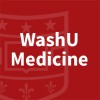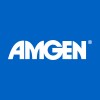
Geriatric Assessments in Senior Adults With Multiple Myeloma
Multiple MyelomaThis study will evaluate the prevalence of geriatric syndromes in older adults with multiple myeloma, examine relationships between baseline geriatrics syndromes and initial treatment selection, and examine risk of functional decline. Relationship between baseline geriatric questionnaires and initial treatment selection in older adults with newly diagnosed multiple myeloma. Feasibility of subjects completing the CARG geriatric assessments at baseline, 3 months and 6 months. Comorbidities or dependence in IADLs at baseline predict decline in functional status at 6 months of follow-up in older adults with newly diagnosed multiple myeloma.

Urinary Protein/Creatinine Ratio in a Single Urine Sample Versus 24-hour Proteinuria in Patients...
Multiple MyelomaThe measurement of 24-hour proteinuria allows an assessment of treatment response in patients with multiple myeloma. But it is difficult and restrictive to make. This study was therefore designed to investigate the correlation between the ratio of proteinuria / creatinine on samples, easier to obtain, and the 24-hour proteinuria in assessing response to this treatment .

Study of Thrombin Generation During the 3 First Cycles of Chemotherapy in Patients With Newly Diagnosed...
Multiple MyelomaPatients with Multiple Myeloma (MM) are at increased risk of venous thromboembolic event, especially in newly diagnosed patients and during induction treatment with thalidomide in combination with dexamethasone. This association was mainly heightened during the 3 first months of chemotherapy. Several coagulation abnormalities have been described. Laboratory tests measuring the overall thrombophilic tendency might be useful to assess thrombosis risk. The aim of this study is to compare thrombin generation by calibrated automated thrombogram during the 3 first cycles of chemotherapy in patients with newly diagnosed MM.

Technology Platform and System Construction of Clinical Evaluation Studies on New Drugs of Hematological...
Multiple MyelomaMultiple Myeloma (MM) is the second diagnosed malignancy of hematological malignancies. The previous study pointed out that the dosage and course of Bortezomib including the dose of concomitant drugs used to treatment MM patients did not get the preferred treatment program, so we are going to determine the optimal doses and course of Bortezomib through the prospective, multicenter clinical trial and evaluate the efficiency and safety of different program.

Preventive Treatment of VETD in Patients With Multiple Myeloma Receiving Chemotherapy With Thalidomide...
Multiple MyelomaPatients with multiple myeloma have seen their survival rate strongly improved with the use of new anti angiogenic agents. Among them, the new chemotherapy with thalidomide or lenalinomide are frequently successfully suggested in therapeutic protocol such as MPT however they can strongly increase the risk of venous thrombo embolic disease (DVT and PTE) up to 20%. In these conditions, a prevention of this risk can be proposed by physician with either low molecular weight heparin (LMWH) anticoagulants or antiplatelets agents. Pending the new recommendations on the management of VTED, the purpose of this study is to describe in real life conditions the management by oncologists of the thrombo embolic risk for such patients

Blood Samples to Identify Biomarkers in Haploidentical Graft Recipients
LeukemiaHodgkin Disease3 moreThe investigators are interested in identifying patient-specific factors related to donor chimerism in patients who receive nonmyeloablative hematopoietic stem cell transplants from haploidentical donors. We will look how patients' bodies break down and immediately respond to cyclophosphamide, fludarabine and mycophenolate mofetil.

Serum Free Light Change in Multiple Myeloma
Multiple MyelomaThe purpose of this study is to evaluate the predictive role of free Kappa/Lambda ration in Multiple Myeloma post-transplant.

Carfilzomib Multiple Myeloma Expanded Access Protocol for Patients With Relapsed and Refractory...
Multiple MyelomaThe purpose of this study is to expand upon the safety data for carfilzomib by providing expanded access to patients with relapsed and refractory multiple myeloma who are unable to enroll in any other ongoing carfilzomib trial.

Identification of Occupational Exposures in Acute Hematologic Malignancy
Non Hodgkin LymphomaChronic Lymphocytic Leukemia1 moreLymphoid hemopathies are a group of malignant haematological disorders characterized by clonal proliferation of cells of the lymphoid line. Non-Hodgkin's lymphoma (NHL), chronic lymphocytic leukemia (CLL), and multiple myeloma (MM) are the most frequently encountered features of lymphoid hemopathies. Duriong the last 35 years the prevalence of these pathologies has increased in France but also in most industrialized countries. This increased can't be solely explained by demographic changes and improvements in diagnostic techniques. As a result, the involvement of environmental and professional factors is strongly suspected. Studies have shown that these diseases are associated with some professions or type of activity, including agricultural occupations, and other sectors such as agriculture, printing, woodworking. Some organic solvents and pesticides have been suspected of being risk factors of hematologic malignancies. Based on cohort studies and case-control studies, some of them have been identified by the International Cancer Research Center as associated with the occurrence of NHL with a sufficient or limited level of evidence. One of the difficulties encountered in the analysis of the literature has been the permanent evolution of the international classification of lymphoid hemopathies over the past 30 years. The old epidemiological studies are therefore difficult to interpret. Lymphoid hemopathies cover a range of different conditions, thus it is likely that carcinogens involved vary according to the type of hemopathy. Finally, environmental and occupational exposures to various chemicals and biological agents have evolved over time. The aim of this study is firstly to develop and validate a questionnaire to identify and quantify exposures to nuisances (substances and agents) suspected of being associated with the occurrence of NHL, MM and LLC. In a second time, this questionnaire will be used as a support for the realization of a subsequent case-control study to improve epidemiological knowledge on these diseases.

Study to Evaluate t(11;14) Status and BCL2 Expression in Adult Participants With Multiple Myeloma...
Multiple Myeloma (MM)Multiple myeloma (MM) is a rare cancer caused by abnormal survival of plasma cells (blood cells). Most trial participants with MM relapse (cancer has come back) or become non- responsive to treatment and remission gets shorter after each line of treatment. This is a study to assess t(11;14) and BCL2 expression in adult participants with newly diagnosed and relapsed/refractory (R/R) MM. Approximately 500 adult participants with newly confirmed or relapsed/refractory (R/R) multiple myeloma (MM) will be enrolled in around 15-20 countries. Participants will receive standard of care while participating in this study. No drug will be administered as a part of this study. Participants will attend regular visits during the course of the study at a hospital or clinic and will be asked to provide bone marrow and blood samples.
